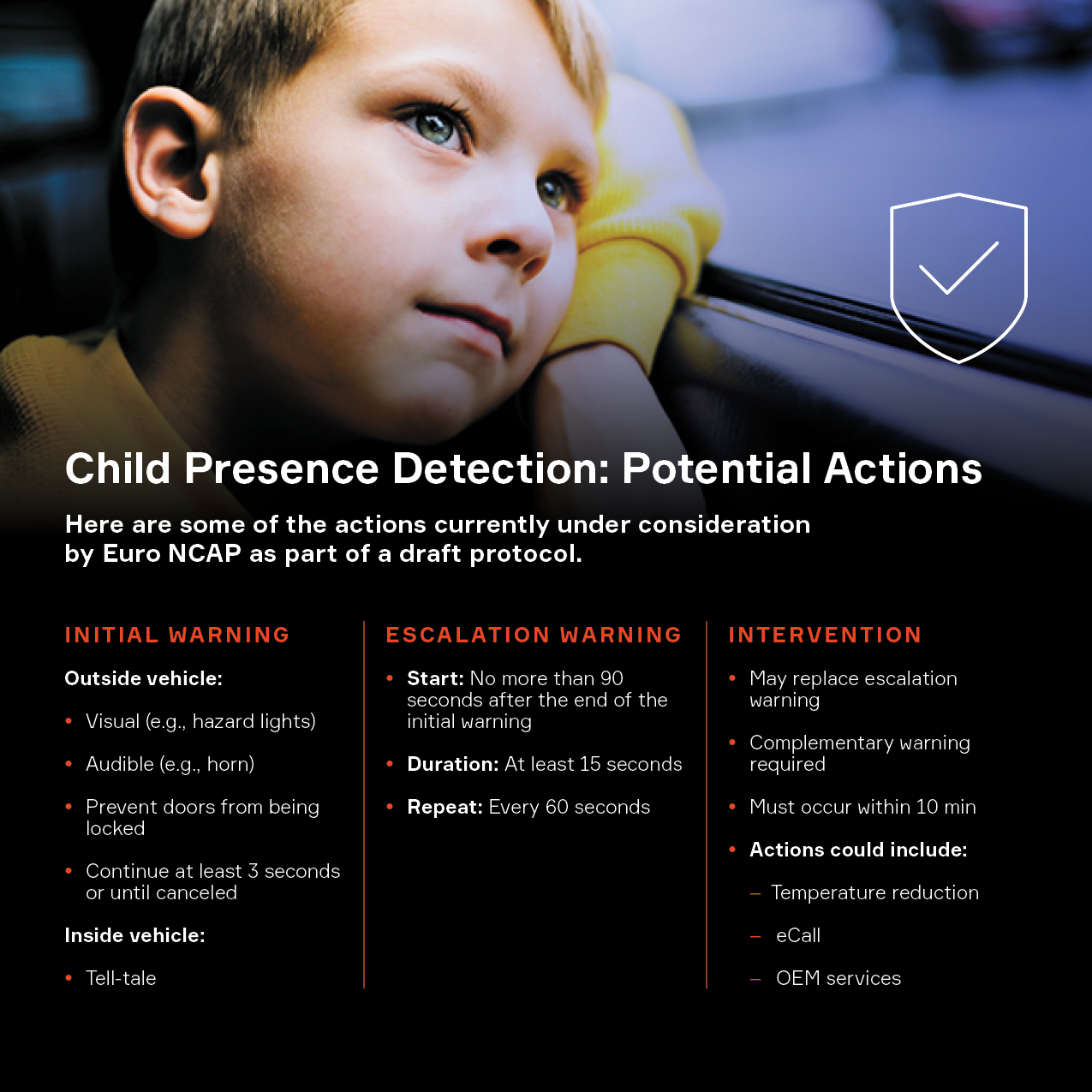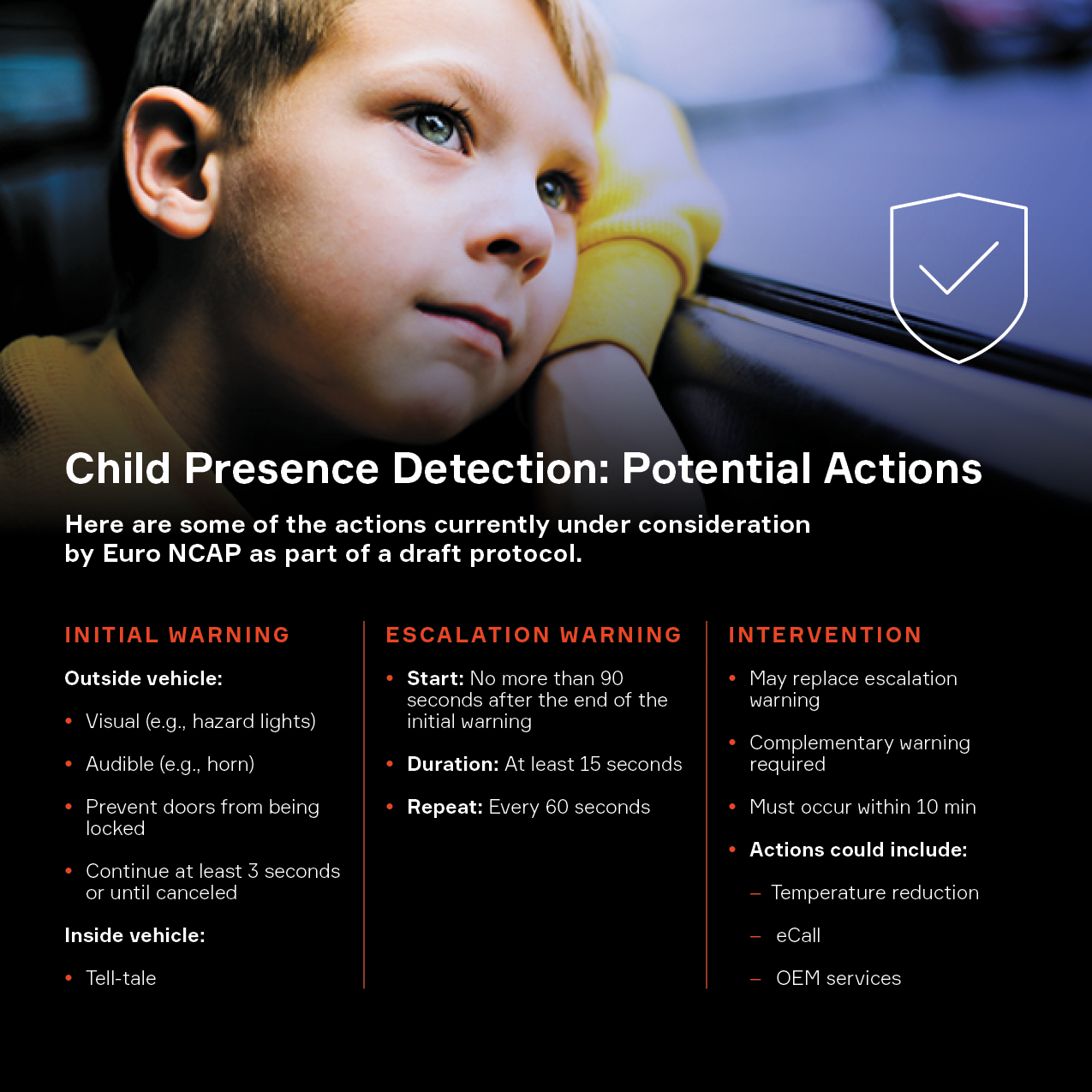Not All Child Presence Detection Is Created Equal
It’s a parent’s worst nightmare: accidentally leaving a child in a car. On a hot day, a small child trapped in a vehicle is especially vulnerable, and in each of the last two years more than 50 children have died due to vehicular heatstroke in the United States alone.
Regulatory agencies around the globe have recognized the need for technology solutions providing child presence detection that can help prevent these kinds of accidents. For example, the European New Car Assessment Programme (Euro NCAP) has announced that it will start to award rating points for child presence detection in 2022.
The good news is that we now have the technologies to make these accidents a thing of the past, and I’m excited to be writing about the work we are doing in this area.
Accurate detection
Aptiv has developed a system that is able to monitor babies, young children or even pets, through a combination of advanced sensors and sophisticated algorithms. Aptiv’s sensing capabilities can enable us to see through heavy blankets or other obstructions to detect an infant’s breathing or pulse, and represent the most comprehensive approach to child presence detection. For the system to be effective, it also has to avoid false positives — that is, the system has to accurately sense when there is a child left in a vehicle. With too many false positives, consumers won’t take any resulting alert seriously.
Alternatively, we can use existing hardware in the vehicle to provide some basic intelligence. For example, using a camera, our object classification algorithms can identify a baby, car seat or other objects that might have been left behind, such as a purse or cellphone. While there are limitations from obstructions to line of sight, cameras can be a cost-effective way to detect a child in the vehicle, especially if the camera is already in the cabin for other purposes.
Taking action
When a vehicle reaches its destination and is turned off, the system would wait a few moments for an adult to get out and go around to the back seat to retrieve the child. At that point, the sensor would briefly activate, just long enough to register anyone who might be there.
If an infant, older child or pet is present, the vehicle could take a number of actions, and Euro NCAP is currently evaluating a draft protocol that spells out these actions. The most obvious is to activate the horn or car alarm and flash the hazard lights for several seconds, and prevent the doors from being locked. If no one retrieves the child after the initial warning, the system could then escalate the warning, repeating the audio and visual alarms for 15 seconds every minute. If there is still no response, the vehicle could send a text message or make a phone call to a registered number. And if the vehicle is electric, the climate control could even switch on to keep the cabin cool, or lower the windows if environmental conditions dictate.

Deaths caused by leaving children behind in vehicles are entirely preventable. Whichever technology we use, every step we take toward effective child presence detection is a step in the right direction.

